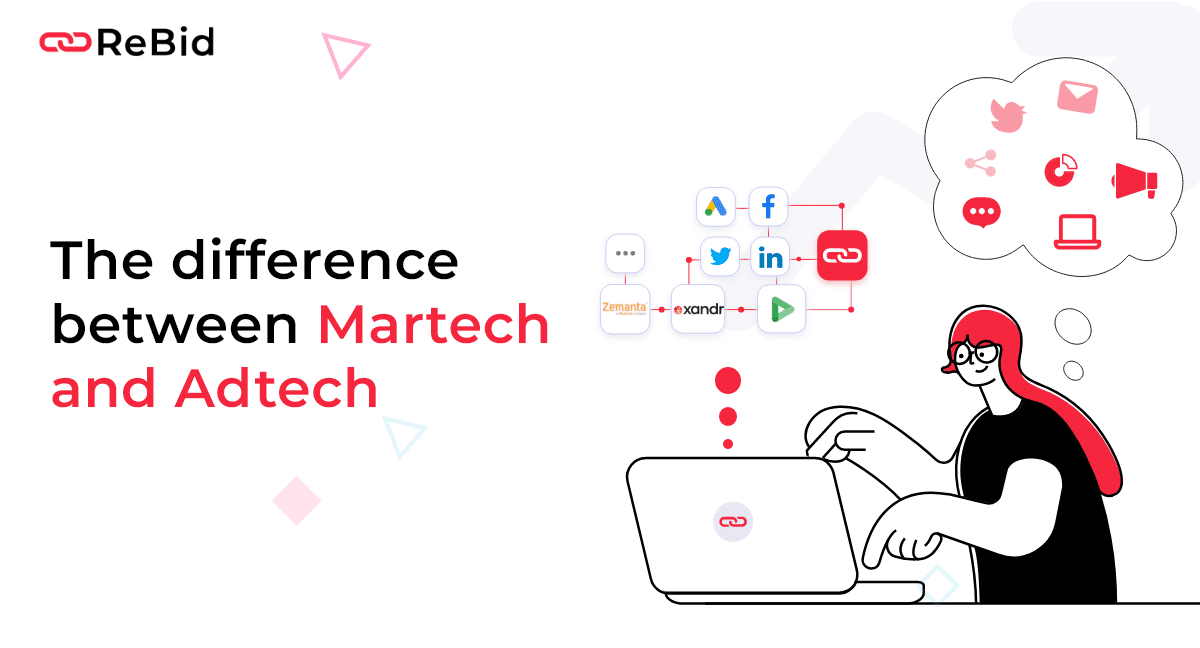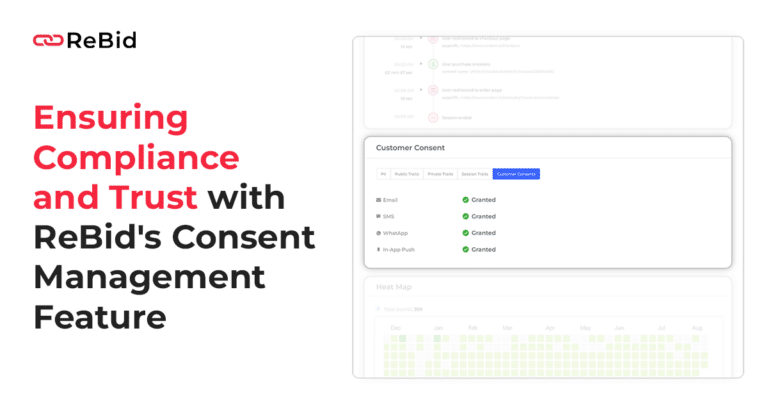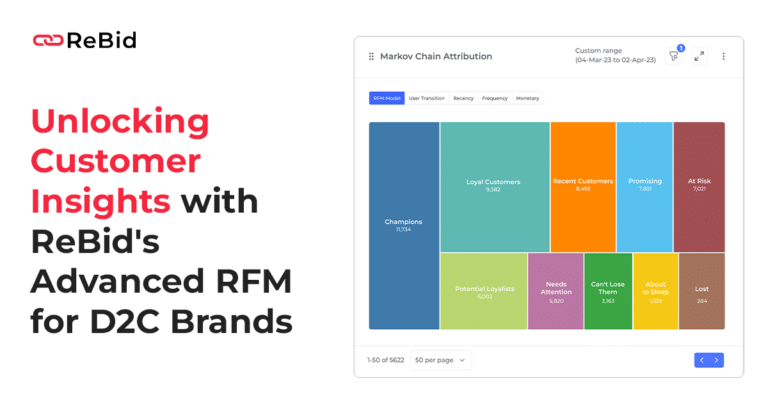Marketing professionals use a wide range of technology in their different marketing and advertising tasks, which are constantly evolving. These technologies increase our efficiency, allowing us to work more quickly and accurately with certain assistance.
Similarly, these tools improve the efficacy of advertising and marketing operations through their capacities to integrate, optimize, execute, and manage processes and data sources, among other things.
Some of them are advertising technologies (AdTech), while others are marketing technologies (MarTech), but all of them are essential.
As a result, publishers must grasp what MarTech and AdTech are and how businesses can get started with these technologies. However, to do so effectively, they must first comprehend the distinctions between MarTech and AdTech – including the advantages, roles, platforms, target audience, and other characteristics of each.
What is MarTech?
Marketing Technology (MarTech) is an umbrella term for technologies that help manage and analyze marketing campaigns. Marketers can effectively leverage their own platforms — such as websites or email — to develop direct interactions with customers through the use of MarTech tools.
Accordingly, MarTech is frequently utilized to execute organic outreach — rather than paid media efforts — to reach consumers who have previously connected with your brand or business.
What exactly is AdTech?
Advertisement technology (AdTech), as its name indicates, is a term that refers to a collection of technologies that also are specifically utilized to carry out digital advertising operations.
These advertising technologies vary from the backend to the frontline execution, and they assist marketers to build, run, and manage ads more effectively for their targeted consumers.
What role do they play?
AdTech is concerned with developing a more effective and more relevant advertising strategy. As a result of having a variety of AdTech tools, you can more accurately detect the platforms and tactics that should be used while collecting data for each campaign. It helps you rest assured that your sponsored ads reach your target audience.
MarTech, on the other hand, is concerned with the development and growth of leads, the improvement of conversions, and the formation of client connections. Marketing on social media platforms, tailored content creation, email/SMS marketing, and earned media are all part of this strategy.
Platforms used for AdTech and MarTech
Platforms for marketing and advertising technology (MarTech and AdTech) are developed to serve the specialized functions of each. As a result, the characteristics of a platform and the tasks it is intended to perform might provide clues as to whether it is a MarTech or an AdTech platform.
For example, advertising technology (AdTech) uses demand-side platforms to execute advertising campaigns, acquire ad inventory, and resell that inventory. Platforms such as Customer Relationship Management (CRM) systems and social media management tools are used in marketing technology.
The primary technologies contained in a MarTech Stack handle every phase of the marketing cycle, from gaining new customers to understanding and retaining existing ones.
Adtech Specific Platform
- Ad agencies and publishers utilize demand-side platforms (DSPs) to purchase inventory from various ad exchanges and publishers. Many DSPs use data from data management platforms as well as offer real-time bidding to allow marketers to buy programmatically, ensuring that they reach the correct customers at the appropriate time. On the other hand, Publishers can employ supply-side platforms (SSPs) to automatically offer their ad inventory to buyers interested in purchasing it.
- Ad exchanges are used to complete the transactions initiated by DSPs and SSPs and, in essence, to complete the transaction.
- Ad servers are responsible for placing advertisements in the appropriate location at the appropriate time. Example: An advertising server might deliver a display advertisement at the head of an article or a banner amid an email newsletter.
MarTech specific Platform
- Web analytics solutions that collect organic visitor data, such as page views, bounce rates, conversions, time on page, including referral sources, are known as web analytics platforms. These platforms may additionally split down visitor demographics by categories, including age, geography, and gender, in addition to providing overall statistics.
- To construct a comprehensive customer perspective and assist consumers through the buyer journey, customer relationship management platforms (CRMs) are used by marketers to collect data from their customers.
- Platforms for content optimization assist marketers in developing more creative messages to fit the interests and demands of their customers. To determine which headline works best, a publisher could employ content optimization software and test several variations.
- By automating tasks (such as email marketing, social media management, and lead generation) through workflows, marketing automation tools assist businesses in optimizing their marketing strategy and achieving greater results.
Target Audience
When a corporation has established some type of relationship with a partner or with another brand, it will employ MarTech to maintain and nurture that relationship over time. In order to interact one-on-one with that entity, they acquire certain data, including names, emails, and some identifying information, including purchase history.
AdTech solutions are much more of a one-to-many strategy, and they assist firms in gaining attention from individuals who haven’t engaged with them yet and are unfamiliar with the company’s brand.
Billing model
Since MarTech solutions are often offered through the cloud and charged monthly with an annual subscription, they are a straightforward and predictable operating expenditure.
AdTech solutions, on the other hand, would most likely charge largely based on metrics such as cost per thousand impressions (CPM), with a fixed fee or a % commission added on top. There will almost always be a minimum monthly expenditure agreed upon, but the amount you pay after that will vary significantly based on the sort of campaign as well as the results you see.
However, as an increasing number of AdTech companies are offering services with a fixed membership cost more akin to MarTech, directed at customers who are cautious of the unpredictable nature of the traditional model, this difference may not be as clear-cut as it once was. Be sure to scrutinize the service and pricing to go through with what you’re getting.
Conclusion – Difference Between AdTech And MarTech
We’ve come to at least two findings in this post after conducting extensive research and analysis. First and foremost, the conceptual Difference Between AdTech And MarTech is significant.
Their duties differ within the marketing and sales sectors, just as advertising and marketing have distinct aims and approaches to one another. On the other hand, the second conclusion demonstrates that both are two sides of the same coin, and both are required to form the most successful group possible.
Rather than focusing on the advantages or the disadvantages of these two approaches, it is much more profitable for the business to utilize the perfect blend of AdTech and MarTech to grow exponentially.





